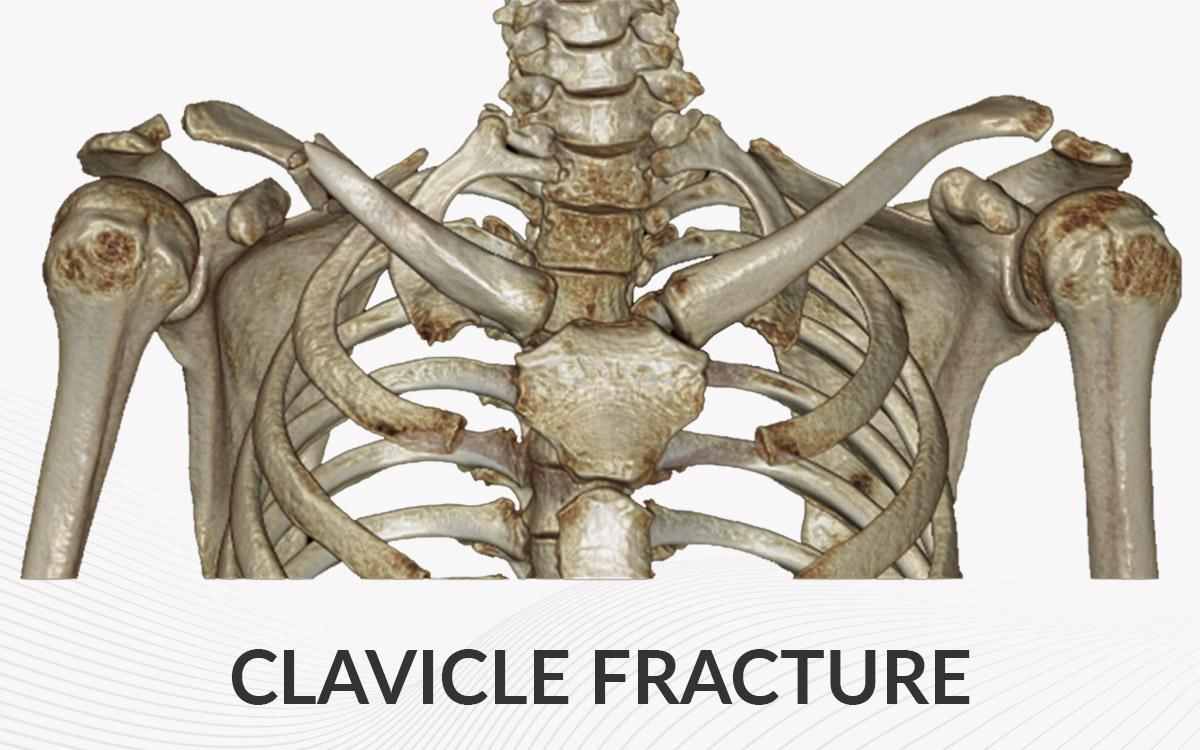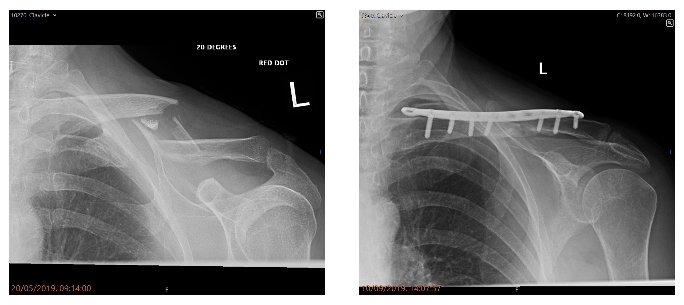
Summary
Causes
- Sports Injuries
- Fall from a bicycle
- Fall on an outstretched hand
- Direct blow to the shoulder for example in a car collision
Symptoms
- Tenderness, swelling, bruising at the site of fracture
- Increase in pain with shoulder movement
- Bulge near the shoulder
- An inability to move or restriction of shoulder movements.
Treatment
- Usually heals without surgery
- Sling and pain medications administered
- For significantly broken bones surgery is recommended
Surgery involves
- General anaesthesia
- Use of plate and screws to hold the bones in position
Anatomy of collar bone
Your collar bone connects the upper part of your breastbone to your shoulder blade. A broken collar bone is a common injury particularly in children and young adults.
Common causes include sports injuries, fall from a bicycle, fall on an outstretched hand or a direct blow to the shoulder for example in a car collision.
What are the symptoms of a broken collar bone?
Symptoms includes tenderness, swelling, bruising at the site of fracture. Pain will increase with shoulder movement. You can notice a bulge near your shoulder, an inability to move or restriction of shoulder movements.
When should I see my doctor?
If you notice the above symptoms then you should seek an appointment with the doctor. Delay in diagnosis and treatment can cause healing in a bad position.
What will happen at the time of appointment?
Your doctor will ask you questions relating to the circumstances of your injury. They will then examine your shoulder and your collar bone especially to see that the broken part of the bone is not putting any pressure on your skin i.e indenting your skin. He will do investigations like x-rays to assess your fracture.
What does the treatment involve?
Most broken collar bones can heal without surgery with good function to the shoulder. It means you will be given a sling and pain medications and you will be seen by a physiotherapist who will teach you shoulder, elbow, hand and wrist exercises. You will be seen regularly in clinics with repeat x-rays to make sure the bone is healing up nicely.
However, occasionally if the broken ends of bone have significantly displaced then your doctor may recommend surgery. Surgery normally involves you being put to sleep i.e. a general anaesthesia and then put together the broken pieces of bone into position and hold it with plate and screws.
What does the postoperative rehabilitation involve?
You will recover in the recovery room and should be able to go home the same day. You will be given painkillers to control your pain. Wound healing will take two weeks and you will have to keep wound dry in that time. Sling will be there for six weeks at which stage you can start driving. Total healing is three to four months.
Very occasionally if the plate is prominent under the skin and depending on the nature of the job; we may need to take it out at the end of one year.
Are there any risks associated with surgery?
Risks include infection, damage to nerves or blood vessels, occasionally bleeding, very occasionally injury can happen to the lungs, bones can take a longer time to join and hardware may have to be taken out if it’s very prominent and irritates under the skin. On the whole it is a good procedure to have with very few complications.
BMI Chelsfield Park Hospital
Bucks Cross Road Chelsfield ORPINGTON BR6 7RG
01689 877855
BMI The Blackheath Hospital
40-42 Lee Terrace Blackheath LONDON SE3 9UD
020 8318 7722
BMI The Sloane Hospital
125 Albemarle Road BECKENHAM BR3 5HS
020 8466 4000
Princess Royal University Hospital
Farnborough Common ORPINGTON BR6 8ND
01689 863223




